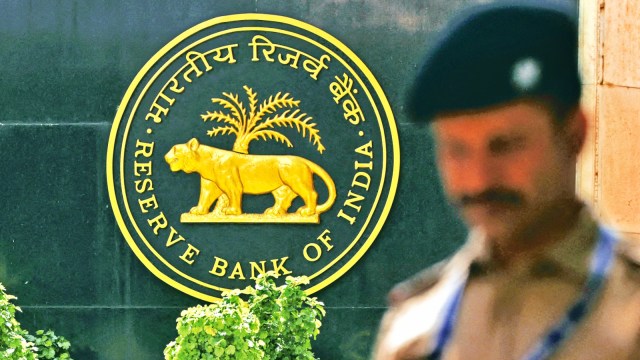Corporate sector must relieve govt of capex heavy lifting: RBI article
In the Interim Budget for 2024-25, the government announced a lower market borrowing for FY25 compared to FY24.
 It announced gross and net market borrowings during the next fiscal of Rs 14.13 lakh crore and Rs 11.75 lakh crore respectively, compared to Rs 15.4 lakh crore and Rs 11.8 lakh crore, respectively during FY24.
It announced gross and net market borrowings during the next fiscal of Rs 14.13 lakh crore and Rs 11.75 lakh crore respectively, compared to Rs 15.4 lakh crore and Rs 11.8 lakh crore, respectively during FY24.The growth momentum seen in the Indian economy during the first half of financial year 2023-2024 (FY24) continues and the next leg of growth is likely to be fuelled by the capital expenditure from the corporate sector, an article published in the Reserve Bank of India’s (RBI) monthly bulletin said. Expectations for a fresh round of capex by the corporate sector to take the baton from the government and fuel the next leg of growth are mounting, it added.
“The corporate sector must get its act together to relieve the government of capex heavy lifting and take advantage of the space ceded in financial markets by a lower budgeted borrowing programme and the easing of borrowing costs that has already begun in response to the Interim Budget for 2024-25, driven as it is by capex and consolidation,” the ‘State of the Economy’ article published in the RBI’s February bulletin said.
In the Interim Budget for 2024-25, the government announced a lower market borrowing for FY25 compared to FY24. It announced gross and net market borrowings during the next fiscal of Rs 14.13 lakh crore and Rs 11.75 lakh crore respectively, compared to Rs 15.4 lakh crore and Rs 11.8 lakh crore, respectively during FY24.
“Now that the private investments are happening at scale, the lower borrowings by the central government will facilitate larger availability of credit for the private sector,” Union Finance Minister Nirmala Sitharaman said in her Interim Budget 2024-25 speech.
During the February monetary policy announcement, RBI Governor Shaktikanta Das said that the investment cycle is gaining steam, aided by sustained thrust on government capex; increasing capacity utilisation; rising flow of resources to the commercial sector; and policy support from schemes, such as production linked incentive (PLI). Revival in private corporate investment is also underway, he said. The RBI’s survey suggests that investment intentions of private corporates remain upbeat and both services and infrastructure firms are optimistic about overall business conditions, Das added. The State of the Economy article has been prepared by RBI Deputy Governor Michael Patra and other central bank officials. The RBI said the views published in the article are of the authors and not of the institution.
The article said that the balance sheets of corporate are healthy on the back of high profits, with leverage remaining constant or improving and the return ratio at a multi-year high.
“Overall inflation developments are also turning favourable, providing a stable environment for corporates to plan expansion strategies in anticipation of a pick-up in demand,” it said. With consumer price inflation (CPI) coming off its November-December spikes in its January 2024 reading, inflation expectations may stabilise and edge down, although renewed pressures from cereals and proteins cannot be ruled out.
Retail inflation, or CPI, eased to a three-month low of 5.1 per cent in January from 5.7 per cent in December. However, it continues to remain above the 4 per cent target of the RBI. Core inflation is at its lowest since October 2019 and non-food wholesale price inflation remains in deflation. This should augur well for the input cost outlook and selling prices of manufacturing firms, the article said. It added the country’s economy continues to sustain the momentum achieved in the first half of FY24, going by high frequency indicators.
The National Statistical Office (NSO) in its first advance estimate, released in January, projected the country’s real gross domestic product (GDP) growth at 7.3 per cent in fiscal 2023-24. The NSO will provide its second advance estimates of national income for 2023-24 and for the third quarter for the first time by the end of this month. Last month’s State of the Economy article had projected real GDP growth at 7 per cent for the third quarter of FY2024.
Implicitly, real GDP would have to expand by 7 per cent in the fourth quarter for the annual estimate of 7.3 per cent to be realised, the article said.





- 01
- 02
- 03
- 04
- 05


























